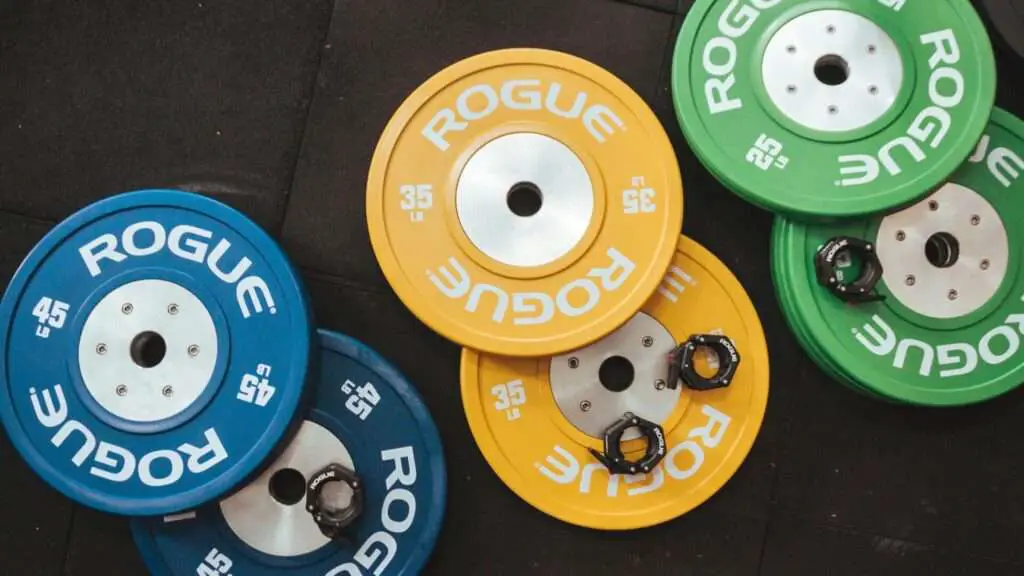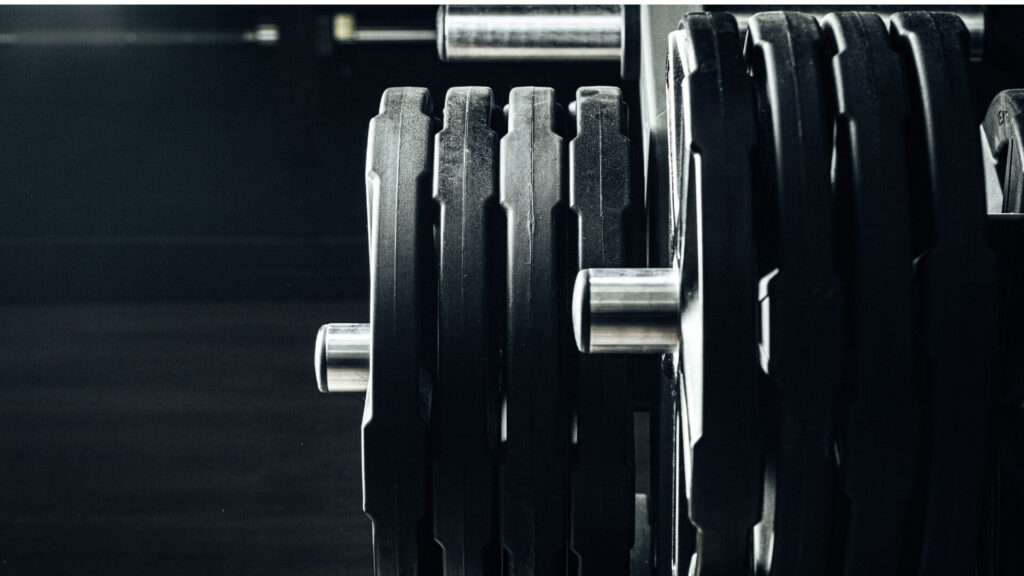The rubber weight plates are arguably one of the essential accessories to lift the bar. This adaptable training equipment is far safer than traditional iron or steel weight plates and more practical for most home and commercial gyms.
In addition, rubber plates may be utilized in several ways, making them suited for nearly any exercise regimen. If you want to learn about rubber weight plates, continue reading to discover what they are, how they can be used, and why you should consider purchasing them if you want to take your strength training to the next level safely and effectively.
What is a Rubber Weight Plate?
Rubber weight plates consist of thin layers of rubber or urethane covering steel or cast iron. It is used to increase the weight in different training exercises. Many rubber plates are hexagonal or have holes to improve grip. Rubber plates are typically used in conjunction with a barbell. They usually weigh 10, 25, 35, and 45 pounds.
- Things to consider before buying rubber plates:
Rubber weight plates can be purchased online or at a local sporting goods store. It would be best to consider which barbell can accommodate rubber plates well. While rubber weight plates are fantastic training tools, they aren’t the right choice for everyone. Before buying them, consider these factors and decide if they are right for you.
How Can Rubber Weight Plates Be Used?
Rubber weight plates can be used in various ways, making them suitable for almost any workout program. Here are a few examples:
- You can use rubber plates as your primary weight source when performing exercises like squats, deadlifts, lunges, rows, and more. Just remember that you’ll need to have a way to secure the plates to a barbell by using the collar.
- If you have a home gym, we strongly recommend you use rubber plates as your weightlifting accessory, as they provide more safety than iron or steel plates and make your house safer. It also makes your home a less noisy place. Additionally, it is advantageous for commercial gyms too.
- You can use rubber plates for maximum-recovery workouts, such as when nursing an injury. Since these plates are much softer and more forgiving than iron or steel plates, they don’t put as much stress on your joints.
- If you’ve been lifting for a while and want to mix things up with a new type of material, rubber plates could be a good option.
Benefits of rubber weight plates
- Rubber plates are safer than traditional iron or steel weights because they don’t Rust and can be cleaned with soap and water.
- Rubber plates don’t make any noise on the bar as iron plates do, and if you’re lifting in a home gym (or a commercial gym), the difference between rubber and iron plates is enormous because you won’t hear the iron noise when you’re shifting weight with rubber plates. Rubber plates also tend to last longer than iron plates do.
- They have a softer surface than iron and steel, making them less likely to cause injury when dropped. For instance, in comparison to an iron plate, the damage caused by a rubber plate accidentally falling to the ground is far less severe.
- They are a safer option for all ages and fitness levels, making them ideal for people who want to start strength training, but keep in mind that they are dangerous too, if not used properly.
- Rubber weight plates are far more secure than their iron counterparts. Meanwhile, rubber weight plates are much simpler to handle than metal ones.
rubber plates vs bumper plates
Bumper and rubber plates may be constructed from rubber, but they serve different purposes.
Bumper plates are steel plates covered by a thick layer of rubber or urethane. When dropped, bumper plates bounce to protect your barbell and flooring. Most weightlifters and Cross Fitters use them since they often drop the bar from above. Because of this, they are a good choice for home gyms. Rubber plates are thin steel or iron plates covered in a thin layer of rubber or urethane. Rubber plates can’t be dropped as bumper plates can. The coating isn’t thick or absorbent enough to prevent damage to floors or barbells.
Bumper plates reduce the weight you can put on the bar since the thick rubber coating makes them broader. The production time involved in making bumper plates causes them to be more costly than rubber plates.

rubber plates vs Iron plates
Let’s start by clarifying the main differences between rubber and traditional iron plates. They have distinct advantages and disadvantages. If you’re interested in the differences between rubber and steel plates, you can choose whichever is better for your personal goals and training style.
First, rubber plates are generally more expensive than iron plates. This is because iron is cheaper than rubber, and many manufacturers will charge a premium for the rubber material. Therefore, iron plates may be a better option if you’re on a tight budget.
However, rubber plates are more durable than iron plates. This means they will last longer and perform better than their iron counterparts. This durability is mainly because rubber is much more resilient than iron.
Due to the resilience of rubber, rubber weight plates are also safer than iron plates. You will almost certainly experience discomfort lifting iron plates, especially if you’re a beginner.
On the other hand, rubber plates are much kinder to your muscles and joints. This makes rubber plates the better choice for beginners and those looking to avoid injuries.
Frequently asked questions
Are Rubber Plates Good for Beginners?
Rubber weight plates are handy for beginners. Why? Because initially, they are easier to handle and provide more protection while building up your strength. Rubber plates make it easier to push your limits without risking injury. You can use them to increase the intensity of your workouts or adapt your body to lifting.
How to clean rubber-weight plates?
Rubber-weight plates are easy to store and clean. Rinse them off with water and allow them to air dry. You can also utilize a degreaser to remove stuck-on debris. If the waste is heavy and requires multiple solutions, you may need to replace the sole plate.
Rubber-weight plates are not toxic or hazardous so you can use them in any environment without worry. However, these items are porous so that they can absorb odors from surrounding areas.
Conclusion
For novice and expert weightlifters, rubber plates are a worthwhile addition to any home or commercial gym. Compared to iron plates, rubber ones last longer and are safer and more resilient.
They are available in a wide range of weights, from low to heavy, making them adaptable to any strength training regimen. Rubber plates are a fantastic choice if you’re searching for a new training item to help you gain muscle and strength.

